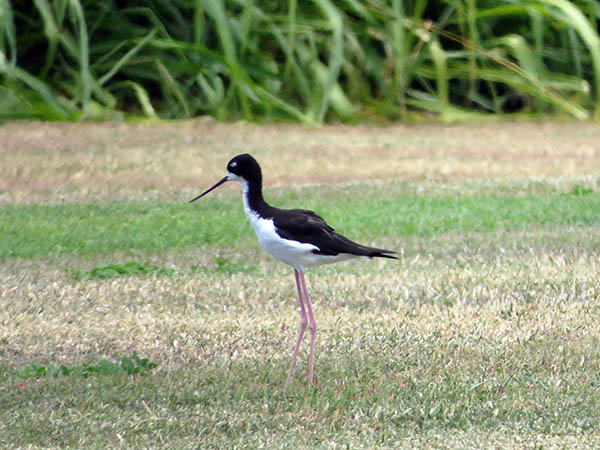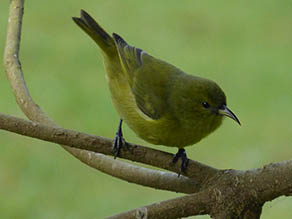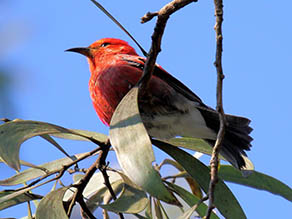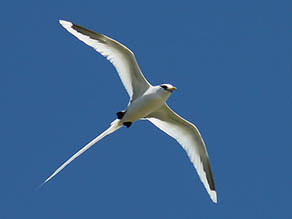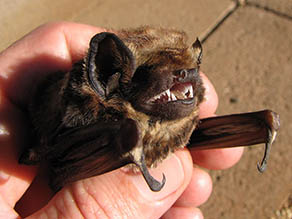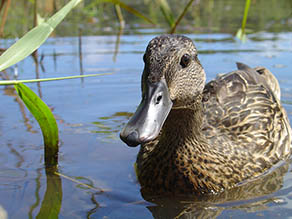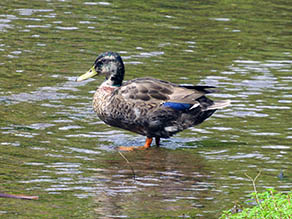 |
 |
 |
 |
||||||
|
|
|
|
|
|
|
|
|
|
|
| Areas | Seasons | Forest | Ocean | Sky | Language | Sources & Links | |||||||||
 |
|
|
 |
||
 |
|
|
 |
||
 |
"And then what’s cool is that up here where we’re at, probably mid-range or upper half of the ahupua‘a, there’s koloa duck. But everyone says that koloa duck on O‘ahu have all become hybridized with mallards, which to a certain extent I would believe is true, biut we have two distinct groups of koloa and one of them certainly looks like a hybrid because you can see a little bit of teal on the heads of the males. But there’s another one that is more frequent than the one we see every now nad then with the teal in the flecks of its head, is a pair that constantly has ducklings up here, and they behave a little bit differently compared to the other ones, in the sense that we do see them in our lo‘i, but where we normally see the for-sure hybrid.
|
 |
|
 |
|
|
 |
||
 |
"But this other pair, and the offspring that have come off of it, tend to spend most of their time in the stream, and what’s pretty cool is they’ll go all the way up to Ha‘akolea, and they won’t hang out at the top part of the pond, above the little water fall, they actually hang out below the little water fall, and then they’ll surf the rapids all the way down. I followed the two with their ducklings from up there as they sufred all the way down to what we call a ho‘i for all the lo‘i, its where the water from all the loi goes into the stream, so to all the way over there. 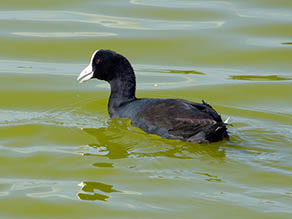
"And then they also tend to fly through the forest. You don’t normally see ducks flying through the forest, you see them above your head, but they’ll fly right through the corridor above the stream. What ducks fly through the forest? They fly through the canopies of the trees. It’s pretty cool. "I know there’s ‘alae ke‘oke‘o as well, further down below from here. And then of course the auku‘u, the black-crowned night heron. Those are also along the riparian areas, the stream or on the margin of the wetlands, even in the lo‘i they’ll be hunting for fish. "Today we still have, to my understanding, every native wetland bird there is. So the ‘alae ‘ula, which just laid chicks down near the ocean front—near the fish pond at the muliwai—as well as the ae‘o, Hawaiian stilt, which has some little fledglings happening right now. 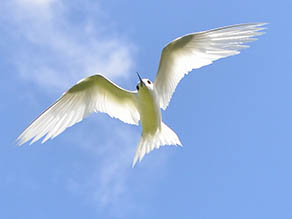
"On the makai end, there’s still a lot of seabird activity: migratory birds, Wedge-Tailed Shearwaters. I haven’t seen any albatross. Manu o Kū [white tern or fairy tern], I see them flying in and around the lower reaches, even around Windward Mall. There’s also an extensive amount of work done out at Mōkapu that has some bird fossil evidence. "Down in Mōkapu is where we have largest population of boobies: we have the black boobies, the blue-foot boobies, the red-foot boobies. ‘Iwa birds are out there every day out at Mōkapu. There’s the Clipper Golf Course that has the water hazards, and in the water hazards there’s ‘alae ke‘oko‘e, ‘alae ula, ae‘o—every single wetland bird is in that golf-course water hazard. And every day the ‘iwa [Frigate] birds come in to drink water out of those water hazards. Which is kind of grtoss. We did a restoration in there. There’s three ponds, we did a restoration for each of those ponds and one of the things that we did is we put an aerator in each pond, because the ponds are so stagnant. And they’re just receptacles for fertilizer from all the runoff from the golf course. 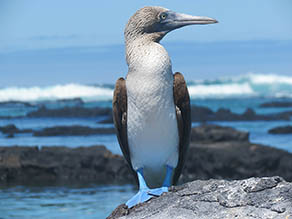
"The area was large enough to sustain a significant population of native birds, but because of the type of vegetation that existed around each one of those ponds, it prevented that. And not only that, it allowed for a lot of places where feral cats could hide, so if anything was trying to nest, then the cats would just nail them. So we had all that vegetation removed, which was primarily pluchea, the two different species of pluchea, we roved both of those, as well as pickle weed, and we planted with some native shrubs but spaced apart. Mostly low-growing shrubs and ground cover. "And then we added in a whole bunch of native sedges and rushes right at the toe of the slope, and in some places on the flats. and we watched the native bird population over the next three years just explode. So it was good. And the aeration of the water made it so that it was not so stagnant and stink, which in my mind helped the ‘iwa birds that would come in and drink water every day. It was a pretty gross job, and there were also some mangroves that got in there somehow. 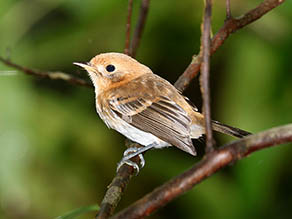
"Every bird has a cultural use or significance, like the ‘elepaio and how it was used to determine whether koa trees were a good candidate for making a canoe. The ‘elepaio, I’m not sure if its diet would consist of non-native insects, I would imagine so. And then as far as the ‘apapane and ‘amakihi are concerned, their role as pollinators for our native plants. "The forest birds actually play a significant role in the nutrient cycle, which is often overlooked. There are so many migratory and ocean birds that nest up in the mountains that collect all these nutrients and proteins from the ocean and transfer that up into the mountains, which to a certain degree aided in a lot of our plant growth. Today that is relatively lacking: most of the birds that nest up in the mountain summits are far and few between, and if they’re not migratory birds, they’re endangered, like the Newell Sheerwater. "In this lower region today, we just have every single invasive, non-native bird you can think of: Bulbuls, Zebra doves, Mountain doves, Minah birds, every sparrow, Chestnut Mannikins, Red Waxbill Mannikins, Red Billed Leiothrix, White-Robed Shamans everywhere." “All my life, I’ve had communication with birds,” Rocky admits. “My father taught me how to whistle to the birds, they whistle back. There were all kinds of different whistles, but never whistle on the way up, because you’re going to get lost, but you can whistle on your way back because you will find your place back. “Till today, I still see the birds. In fact, one day I was in my room and there was a computer, and a bird came in the window and I was talking to him, came on my computer, I closed my door at home. “I went to court because my son had to go to court. The bird followed me all the way to the courtroom. I don’t know, hit the glass on the courtroom, ‘Oh my god, did it die?’ No, but it went all the way back. “Maybe a month or so before my husband died, two or three weeks, my other granddaughter and I were coming home from the hospital. We went to Taco Bell. I was in line and she said, ‘Nana, come on, move your car.’ I came from the hospital late at night. I said, ‘No, I can’t move the car.’ She said, ‘Why?’ I said, ‘Because there’s a pueo in front of the car.’ She says, ‘No.’ I said ‘Yes there is.’ She said, ‘I’ve never seen one.’ I said, ‘Well, there is.’ 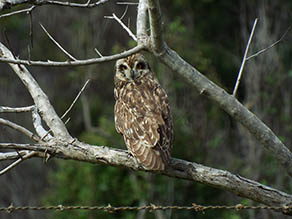
“She looked at the front of the car and there was the biggest owl—that’s the pueo—in the front of my car in the drive-thru at Taco Bell. So I said, ‘You cannot kill those birds. You’re forbidden to kill an owl.’ So, I have to wait. The bird gently lifted himself up real slow, spread out the wings. And I swear, it’s like the whole span of the front of my car. And it moved so slow. And it turned completely around and looked at us, and then flew away. And I said, ‘That’s a sign. Something’s going to happen.’ “Well, something did happen. This was right before my husband died. “My kids went up to the bomb shelter and they used to camp up there. And one night, the bomb shelter had an opening on the top and my son said, ‘We’re trying to come out to come back down, get a mosquito punk for the mosquitoes, but this big owl was blocking the way.’ and they were trying to get the gun to shoot it, but they couldn’t get it in time to shoot it. They had this little pellet gun. I said, ‘You’re not supposed to shoot those birds.’ I said, ‘The owl, that’s our ‘aumakua. It’s taking care of you.’ "That's the kind of stuff you see here.”
|
 |
|
 |
The environmental zones and living beings of He‘eia provide the context in which the people of this land derived their Sustenance.
|
 |
||
 |
|
 |
||

|
 |
||||
|
||||
Copyright 2019 Pacific Worlds & Associates • Usage Policy • Webmaster |
||||
